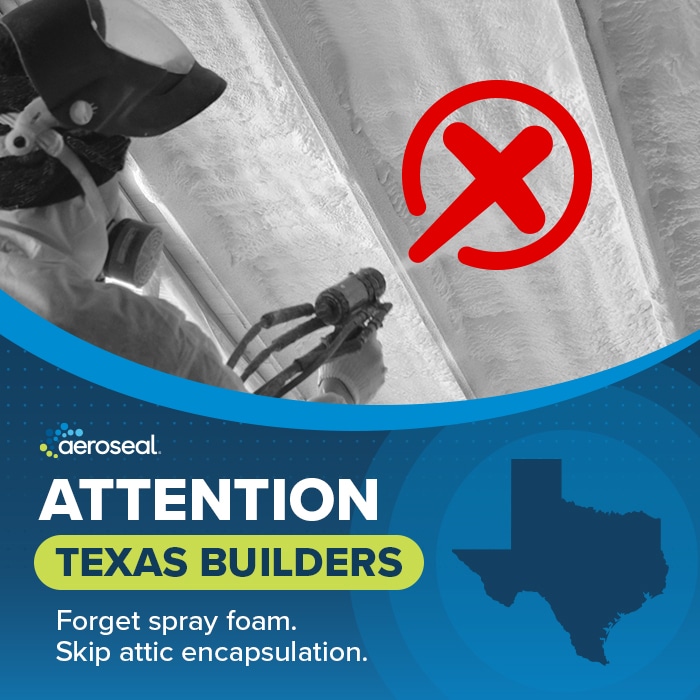Are Air Tight Homes Unhealthy?

We asked 6 IAQ experts and here’s what they told us.
(Note: this article will appear in its entirety in the Fall issue of Home Energy Magazine. www.homeenergy.org)
Is an airtight house a health hazard? Some will say yes.
The EPA cites indoor air sometimes contains 2 – 5 times the pollutants compared to the outdoors, due to issues that range from moisture and mold to carbon monoxide poisoning and asthma. The source of these issues includes poor filtration, bad ventilation, homeowner behavior, and off-gassing from household products and finishes. While the above may be true, there is a recent push by homebuilders to make indoor air quality (IAQ) healthier than outdoor air – even in cities with the highest levels of air pollution.

There is a growing trend toward homes becoming clean-air sanctuaries, and safe zones from high levels of outdoor air pollution; made possible with the help of improved building codes, increased awareness, designing for health, product innovations, and transparency.
The bare minimum: building codes
Building codes require minimum ventilation. Gary Church-Smith, IAQ Specialist from Panasonic Eco Solutions, says, “Codes are moving the baseline of minimum indoor air quality higher. ASHRAE 62.2 intends to help reduce or eliminate moisture, and improve IAQ through adequate fresh air.”
Max Sherman, Senior Scientist at the Lawrence Berkeley National Laboratory and ASHRAE Board Member says, “Tight construction is one of the most important cornerstones of high-performance homes, but is only possible with the ensured dilution of indoor contaminants. And this ensured dilution is dependent on an effective base standard for whole-house and spot ventilation. This is why the ASHRAE 62.2 residential ventilation standard is critical to transforming the residential sector to high-performance homes.”

Moisture danger
Frank Najafi, Principal of PropertyHealth,says moisture and mold become a problem when construction is too tight and ventilation is inadequate. Najafi’s firm specializes in IAQ assessment for commercial buildings, public offices, and universities. He says the main issue he sees in residential projects include mold and bacteria due to water leaks, trapped moisture, lack of ventilation and filtration, and occupants sealing up windows in an effort to save energy. For new home construction, he emphasizes the importance of installing a weep screed, a type of building material used along the base of an exterior stucco wall. The screed serves as a vent so that the moisture can escape the stucco wall finish just above the foundation.
Off-gassing:For new homes, Najafi says formaldehyde is the number one risk to IAQ, including the off-gassing of cabinets, wood furniture, paints, and hardwood flooring and finish. “Even with a properly designed mechanical and ventilation system, the off-gassing from these items will still circulate.”
Testing IAQ:In order to assess air quality and potential issues, Najafi implements SUMMA canister testing and TO-15 analysis. The advances in sampling for volatile organic compounds have made it simple and more effective than in the past. No longer is the investigator worried about calibrating their pumps and finding a power source.
Beware of toxic materials
Bob Krell, Publisher of Healthy Indoors Magazine says, “You can do everything right; seal the home, install perfectly designed ventilation and filtration systems, but still have toxic indoor air if the wrong materials are used.”
“You can do everything right; seal the home, install perfectly designed ventilation and filtration systems, but still have toxic indoor air if the wrong materials are used.”
Krell says homebuyers now rank health as more important than energy efficiency, but most builders have yet to catch up to this trend. Homeowner interest in healthy indoor air is reflected in an increase in Healthy Home Evaluator certifications from the Building Performance Institute (BPI). BPI develops the technical standards for home energy audits and for energy efficiency, health, and safety improvements.
How do we know what is in a building product or finish? Krell says product transparency is the future of green building. This is consistent with the message from the American Institute of Architects, advising architects to ask, does a manufacturer promote transparency and disclose ingredients?
Finding products that promote transparency is made easier through key resources, including:
The Quartz Project: Quartz aims to bridge the gaps between information, knowledge, and action, leading to less toxic, lower-impact building materials; using a consistent and transparent methodology, our database includes composition, environment, and health hazard information on 102 common building products. Information is critical for market transformation towards less toxic and lower-impact materials. With open data, we can begin to measure, demand, and design better products, buildings, and communities.
Healthy Building Network: The HBN was founded in 2000 to reduce the use of hazardous chemicals in building products as a means of improving human health and the environment.
Cradle to Cradle: The Cradle to Cradle Products Innovation Institute, a non-profit organization, educates and empowers manufacturers of consumer products to become a positive force for society and the environment. The Institute administers the publicly available Cradle to Cradle Certified™ Product Standard, providing designers and manufacturers with criteria and requirements for continuous improvement, labeling product contents and manufacturing methods.
GreenScreen: GreenScreen for Safer Chemicals is a publicly available and transparent chemical hazard screening method to help move our society quickly and effectively toward the use of greener and safer chemicals. GreenScreen allows users to evaluate chemicals based on their inherent hazards — for example, to determine if they are linked to cancer, are toxic to fish, or are persistent in the environment—and to promote continuous improvement toward safer chemicals.
HPD: The Healthy Product Declaration Collaborative is a not-for-profit, member organization that is continuously improving the building industry’s performance through transparency, openness and innovation in the practices of reporting, disclosure, specification and selection of building products.
Google: The Google Healthy Materials Program evaluates all building products and materials through a rigorous screening process and uses criteria based on established industry standards that value transparency and material health. Products that meet these criteria are available to be specified and procured for Google design and construction projects around the globe. The Google initiative means consumers can know all the ingredients of every product ─ from wheelchairs and sofas to the paint and finishes ─ just like the nutrition labels on the food you buy at your neighborhood grocery store.
The tighter the better
Meanwhile, in Seattle, Tadashi Shiga from Evergreen Certified consults builders on zero energy homes (ZERH) and Passive House construction. In doing so, he is constantly searching for ways to tighten the home envelope and make it as tight as possible. By doing so, it reduces energy demand. Shiga recommends his clients seal the home envelope with advanced framing and insulation strategies, including the use of Aerobarrier. Shiga says, “With AeroBarrier we are able to make the home nearly leak free, which allows us to control the living environment and make indoor air better than the outdoors. The occupants of such homes report fewer allergies and breathing easier — literally.” AeroBarrier received the 2018 Edison Award, the top honor for product innovation — beating out runner-up Dow.
“We are able to make a home nearly leak-free, which allows us to control the living environment and make indoor air better than the outdoors. The occupants of such homes report fewer allergies.”
Shiga reports ACH levels as low as .2, therefore, he says fresh air ventilation and improved filtration become ever more important; he instructs all clients to install HRV systems and does a thorough design analysis with energy and ventilation modeling.

The Future of IAQ
Susan Rosenberg, an IAQ expert from Desert Cities Indoor Air, has inspected over 1,000 buildings for hazardous conditions related to moisture intrusion and potential mold growth; her projects include schools, commercial properties, and residences. Rosenberg says product declarations are key to improving IAQ.
Such declarations and reporting may be the future of improved indoor air quality in homes.
Rosenberg says eliminating formaldehyde and using low or no VOC materials is critical to a building’s health, she sees a future that requires homebuilders to maintain a database of all materials and ingredients used during construction. She says, “Homeowners have the right to know what’s in the air they are breathing.”
“Homeowners have the right to know what’s in the air they are breathing.”
A product database may require time to build and enforce. Meanwhile, there is nothing holding back technology and its rapid advancement toward air quality reporting and highly sensitive monitors. Already able to identify levels of Formaldehyde, Benzene, Xylene, Toluene, PM2.5: Particulate Matter, Carbon Dioxide, and Carbon Monoxide, monitors are becoming more precise and capable of testing a broad range of air contaminants.
Church-Smith says Panasonic will be incorporating sensor technology into its ventilation products to help create the healthiest living spaces possible. Sherman says there is no question, “The future of IAQ is monitoring and product transparency.”













